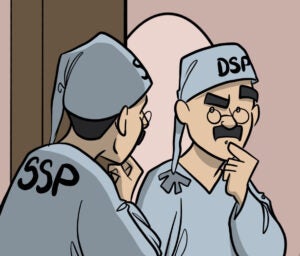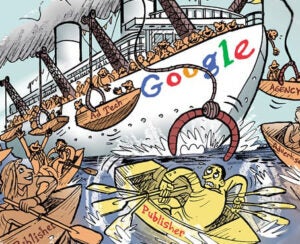Forget the race to the bottom.
The digital ad industry is in a “flight to quality,” according to Freestar CEO Kurt Donnell.
One reason why is because publishers can now work more closely with the buy side via direct DSP connections, such as The Trade Desk’s OpenPath.
Freestar integrated OpenPath for its publisher ad network’s display and video inventory in late 2022. After six months, ad spend flowing to Freestar publishers via The Trade Desk (TTD) had doubled, Donnell said, and pubs now see 3x higher inventory fill rate from TTD demand and 27% higher programmatic revenue from these buyers.
TTD determined these increases by comparing a year’s worth of Freestar data prior to the integration (from Q3 2021 to Q3 2022) against a year’s worth of data post-integration (from Q3 2022 to Q3 2023).
SPO strategy
DSPs like TTD are becoming more proactive about forging direct programmatic connections to publishers because buyers want to avoid certain controversial SSP practices, Donnell said, pointing to reselling, misdeclared IDs and low-quality inventory pooled with premium placements.
For example, one SSP was reselling every bid request Freestar sent 10 to 20 times.
But when Freestar sends a bid request directly to TTD, it’s a much cleaner supply path, Donnell said, which helps with attribution and optimization.
Plus, the fees on OpenPath deals are on the low side compared to deals that also include an SSP, which buyers like, he said.
Server-side signals
Implementing OpenPath was a fairly straightforward process.
Freestar started with a server-side integration, which involved adding OpenPath to Freestar’s Prebid Server stack, similar to how Freestar would add another SSP, Donnell said.
OpenPath bids come directly into Freestar’s Prebid Server setup, rather than directly into its Google Ad Manager ad server, he said. The bids compete with other SSP bids, both client-side and server-side. Although OpenPath isn’t compatible with Google Open Bidding, it also competes with bids that come in through Google-run auctions.
Because TTD gets better visibility into Freestar’s inventory through this server-side integration, it’s helped Freestar address buy-side concerns about on-site ad loads.
Strictly speaking, Freestar isn’t a publisher. It operates a publisher ad network and manages header bidding integrations for publishers. Donnell conceded that not all of the inventory in its network is created equal. But the OpenPath integration allows Freestar to help publisher clients clean up their ad experiences to be more aligned with buyer preferences.
For example, when a new site joins the Freestar network, the ad-to-content ratio might be “higher than we want to see,” Donnell said.
TTD is “picking up those types of things and giving us feedback,” he said. “That’s the beauty of being closer to the buy side: understanding what they need.”
Yield optimization
The OpenPath integration also doesn’t interfere with header-bidding optimization, Donnell said. Freestar still controls how bids are sent to individual bidders and under what circumstances.
Meanwhile, increased transparency into Freestar’s network lets TTD make smarter and sometimes higher bids for publisher inventory and certain high-performing audiences, which increases yield, Donnell said.
Freestar also works closely with TTD to set up curated audiences and convey the deal IDs to interested buyers, he said.
Meanwhile, buyers via direct supply paths are less hesitant with their spending than they might be when buying through an SSP, Donnell said, given the lower take rates.
But SSPs don’t have to worry that DSP-driven solutions like OpenPath will eat their lunch, according to Donnell. TTD buyers are still spending through SSPs, and there hasn’t been much drop-off in demand.
“It’s the OpenPath side that’s picked up so much and been truly incremental,” he said.
Freestar’s gains from OpenPath demand have been biggest for impressions with a UID2 attached, which is TTD’s preferred alternative ID, Donnell said. But a UID2 integration is not required for publishers to integrate with OpenPath, and it supports other alt IDs.
Programmatic upheaval
Next on Freestar’s road map is setting up a client-side OpenPath integration, “so [TTD] can pick up more signals from the browser itself,” Donnell said. The integration is in the testing phase and could be live within a month.
OpenPath isn’t Freestar’s only direct-to-DSP connection, though. It’s currently running direct-to-buyer programmatic deals via Yahoo Backstage, and does some direct IO deals with Basis Technologies.
Donnell expects more DSPs to go direct to publisher as DSPs and SSPs alike struggle to differentiate themselves. Increased competition between them is ultimately good for publisher yield, he said, as is the case when SSPs compete against each other.
For instance, TTD now consistently ranks among Freestar’s top 10 bidders, and sometimes ranks among the top five, Donnell said.
But, while DSPs and SSPs are increasingly competing, “they’re still working with each other,” he said. “It’s an interesting dance.”
















